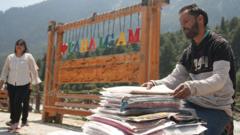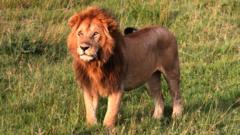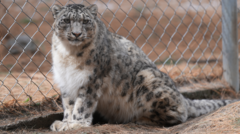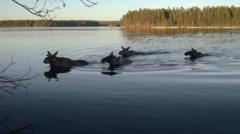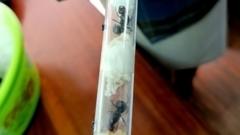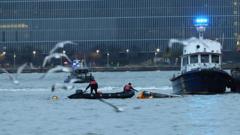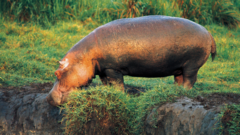With an estimated 100,000 wild saltwater crocodiles in Northern Australia, their significant resurgence from near extinction presents challenges as local authorities navigate the complexities of human-crocodile interactions.
**Crocodile Conundrum: Balancing Conservation and Human Safety in Northern Australia**
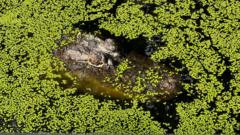
**Crocodile Conundrum: Balancing Conservation and Human Safety in Northern Australia**
In Australia's Northern Territory, managing the thriving saltwater crocodile population has sparked a significant debate on conservation versus public safety.
In the Northern Territory of Australia, authorities face a pressing dilemma regarding the management of saltwater crocodiles, whose population has surged from approximately 3,000 to around 100,000 after hunting was banned in 1971. Government ranger Kelly Ewin exemplifies the challenge, as he balances the need to capture dangerous crocodiles while educating the public on coexistence with these apex predators.
Darwin Harbour serves as both a habitat and a hotspot for recreational activities, promoting meetings between humans and crocs, particularly during breeding season. Saltwater crocodiles, known for their aggression and territorial nature, pose inherent risks, with rare but fatal encounters bringing the issue to public attention. The NT government has implemented programs like "Be Crocwise," educating locals on safety around potential crocodile habitats, a model being considered by other regions.
Culling is currently not an option due to the crocodiles' protected status; however, a new management plan allows for a significant increase in annual culling quotas, raising the limit from 300 to 1,200 crocs, reflecting concerns about public safety while still recognizing the species' conservation needs. Following incidents, political rhetoric often leans toward limiting crocodile populations to ensure human safety—a response that experts warn could contradict longer-term conservation efforts.
While crocodiles play an integral role in the NT’s ecosystem, they also serve economic purposes. Eco-tourism and crocodile farming has seen growth, driven by luxury demand for crocodile skin from high-end fashion brands. Collaborative efforts between crocodile farmers and Aboriginal communities aim to balance economic benefits with cultural reverence for these creatures.
Opposition exists against crocodile farming practices, centered on concerns about animal welfare and captivity methods, especially given crocodiles’ need for social interaction. The discussions surrounding these apex predators encapsulate broader themes of wildlife management, conservation ethics, and human adaptation to potentially dangerous wildlife.
As Darwin navigates its unique coexistence with crocodiles, decision makers emphasize the delicate interplay of conservation, education, safety, and economic benefit—an ongoing balancing act that reflects the complexities of wildlife management in a world where human habitats and untamed nature often collide.
Darwin Harbour serves as both a habitat and a hotspot for recreational activities, promoting meetings between humans and crocs, particularly during breeding season. Saltwater crocodiles, known for their aggression and territorial nature, pose inherent risks, with rare but fatal encounters bringing the issue to public attention. The NT government has implemented programs like "Be Crocwise," educating locals on safety around potential crocodile habitats, a model being considered by other regions.
Culling is currently not an option due to the crocodiles' protected status; however, a new management plan allows for a significant increase in annual culling quotas, raising the limit from 300 to 1,200 crocs, reflecting concerns about public safety while still recognizing the species' conservation needs. Following incidents, political rhetoric often leans toward limiting crocodile populations to ensure human safety—a response that experts warn could contradict longer-term conservation efforts.
While crocodiles play an integral role in the NT’s ecosystem, they also serve economic purposes. Eco-tourism and crocodile farming has seen growth, driven by luxury demand for crocodile skin from high-end fashion brands. Collaborative efforts between crocodile farmers and Aboriginal communities aim to balance economic benefits with cultural reverence for these creatures.
Opposition exists against crocodile farming practices, centered on concerns about animal welfare and captivity methods, especially given crocodiles’ need for social interaction. The discussions surrounding these apex predators encapsulate broader themes of wildlife management, conservation ethics, and human adaptation to potentially dangerous wildlife.
As Darwin navigates its unique coexistence with crocodiles, decision makers emphasize the delicate interplay of conservation, education, safety, and economic benefit—an ongoing balancing act that reflects the complexities of wildlife management in a world where human habitats and untamed nature often collide.

